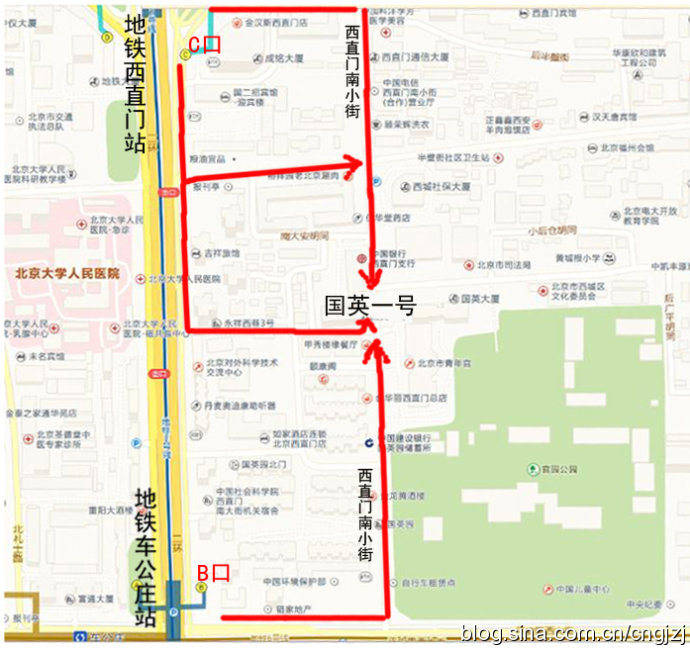中国民间中医医药研究开发协会国际针灸合作委员会
办公地点现在已经搬迁至西城区西直门南小街国英园一号楼824室,
同时为方便大家联系,固定电话已经变更
新号码010—58562339。特此通知。
地址:北京西城区西直门南小街国英园一号楼824室
邮编:100035
电话:010-58562339
传真:010-58562339
邮箱:cngjzj@163.com
网站(点击网址直接链接↓):http://www.cngjzj.com/
博客(点击网址直接链接↓):http://blog.sina.com.cn/cngjzj
交通路线图 (点击观看大图)

从首都机场乘坐机场专线,在东直门站下车换乘地铁2号线开往西直门方向,在西直门站 C 口出站:
1、沿西直门内大街向东直行100米,右拐到西直门南小街,向南步行到丁字路口即到国英园1号楼楼下。
2、向南直行50米,绕过 国二招宾馆 沿着中大安胡同向东到西直门南小街,向南步行到丁字路口即到国英园1号楼楼下。
从首都机场内乘坐机场直达西单的大巴,在西单站下车,乘坐出租车到西直门南小街国英园1号楼。
公交官园站:107路,运通106路
公交西直门南:387路,44路,800内环,816路,820内环,845路
地铁车公庄:地铁二号线
地铁西直门:地铁二号线
公交车公庄东:107路,118路,701路
公交车公庄北:209路,375路,392路
 您现在的位置是:
首页 >>
Chinese health 中医保健 >>
Family health medicine 家庭
您现在的位置是:
首页 >>
Chinese health 中医保健 >>
Family health medicine 家庭
2016年07月01日
 复制链接
复制链接
 打印
打印
 大 中 小
大 中 小
Drink hot drinks cause cancer?
The 2016-06-16
Source: People's Daily online - health channel
People in Beijing on June 16 (international agency for research on cancer (iarc) is one of the world health organization (who) subordinate agency for research on cancer (iarc), the agency is drinking coffee, and other hot drinks composition whether cancer were evaluated. The international agency for research on cancer experts found that hot drinks may cause esophageal cancer. (" overheating "refers to drink temperature above 65 ° C.)
The international agency for research on cancer experts found, no conclusive evidence establishing that coffee will cause cancer. "You can continue to enjoy your coffee, just don't drink too hot!" Yerba mate is a similar tea dried leaves of the tea, the major consumer groups in South America. "General composition in high temperature (about 70 ° C), but also can be used as a cold drink and cold drink. There is no conclusive evidence establishing that the temperature is moderate or cancer-causing composition as a cold drink." Experts say.
"The research results show that drinking hot drinks may cause esophageal cancer, its reason is that the temperature, not the drink itself." The international agency for research on cancer (iarc director Christopher Wild, director of the said. "Smoking and alcohol consumption is the main cause of esophageal cancer, especially in the high-income countries." Christopher Wild, director stressed that if you want to reduce the risk of cancer, you should not smoking and drinking, "most of the esophageal cancer occur in parts of Asia, South America and East Africa, where the phenomenon of drinking hot drinks are common, the cause of the high incidence of esophageal cancer has not been determined. This is what the international agency for research on cancer decided to assess the evidence in this matter."
The world health organization representative in China Dr ShiHeDe thought, we should correct view the results of this study. "We're not let everybody don't drink hot drinks. These studies is the core of the information we hope you can use your common sense, do not drink hot drinks, etc. It is cool to drink a little." Dr ShiHeDe said, "we need more information and research to prove that hot drinks and the exact relationship between esophageal cancer, including the connection between consumption and cancer risk. We can confirm that smoking can lead to esophageal cancer, lung cancer, laryngeal cancer, oral cancer, kidney cancer, bladder cancer, pancreatic cancer, stomach cancer and cervical cancer. If you want to reduce the risk of cancer, smoking today!"
Learned, esophageal cancer is the world's eight is one of the most common types of cancer, is also the leading cause of cancer deaths. 2012 figures show that about 400000 people died from esophageal cancer, accounting for 5% of the total cancer deaths.
The international agency for research on cancer classified guide carcinogens
The international agency for research on cancer (iarc) using the following categories to distinguish carcinogens carcinogenicity.
Class 1: this material is human carcinogen.
When there is enough evidence to prove that the human cancer, known as class 1. In other words, the more convincing evidence to prove that the material of cancer. To make the basis of the assessment is usually contact with the material of cancer epidemiology study.
Tobacco belong to class 1 carcinogen.
2 a class: the material for the possibility of human cancer is higher.
When limited evidence that cause cancer in humans, and there is enough evidence of carcinogenicity in experimental animals, is the 2 a class. "Limited evidence" means to observe the contact between the material and cancer, but other explanation for the link cannot be ruled out (technically called accidentally, deviation or confusion).
2 b: the material had a lower risk of human cancer.
When the limited evidence or insufficient evidence to prove that a substance carcinogenic in humans, and prove that the material of experimental animal cancer when the evidence is insufficient, is 2 b.
Three categories: the material for the carcinogenicity of humanity has not yet been classified.
When proved insufficient evidence of a substance to carcinogenicity in humans, and prove that the material evidence of carcinogenicity in experimental animals not full or limited, is the 3 classes. Limited evidence of experimental animals refers to existing evidence that it causes cancer, but has not yet been finalized. When that evidence of human cancer cannot contribute to some sort of conclusion (referred to as "insufficient evidence"), but has sufficient evidence of carcinogenicity in experimental animals, can also be classified as three categories.
Four categories: the material may not be carcinogenic to humans.
When that something which did not constitute a carcinogenic substance of human and experimental animals, is the four categories.
If the international agency for research on cancer (iarc) will be a material as a carcinogen, mean that once exposed to the material will be cancer?
Not necessarily. The classification of the international agency for research on cancer (iarc) is based on the evidence of a particular material cause cancer to divide. The international agency for research on cancer (iarc) tried to confirm the risk of cancer, is exposed to the material and the possibility of cancer. However, in terms of material involved, the actual risk of cancer depends on the way and degree of exposure, and the impact of the material.